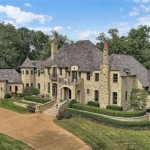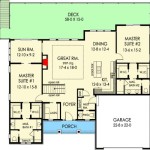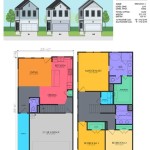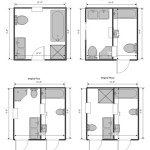House Plans With Hidden Room: Unveiling the Secrets Within
The concept of a hidden room within a house has long captured the imagination, fueled by narratives of intrigue, mystery, and secure refuge. Beyond the romanticized image, incorporating a concealed space into a home's design can serve practical purposes, ranging from added security and storage to a unique recreational area. This article explores the nuances of house plans featuring hidden rooms, examining their design considerations, potential uses, and relevant building regulations.
A hidden room, by definition, is a space deliberately concealed within the existing structure of a house. It is designed to be inconspicuous, blending seamlessly with the surrounding architecture and avoiding detection by casual observers. The methods of concealment vary widely, depending on the room's intended purpose, the architectural style of the house, and the owner's preferences. Some common concealment techniques include disguised doorways, movable bookshelves, false walls, and access points hidden within furniture or fixtures.
Key Point 1: Design Considerations for Hidden Rooms
Designing a hidden room requires careful planning and attention to detail. The location of the hidden room is paramount. Ideally, it should be situated in a less trafficked area of the house to minimize the risk of discovery. Spaces such as attics, basements, areas under staircases, or even within larger rooms behind cleverly disguised walls are all potential candidates. The size of the room will be dictated by its intended use and the available space. However, it's important to maintain a sense of proportion and avoid creating a space that appears unduly large or oddly shaped, which could draw unwanted attention.
The access point to the hidden room is perhaps the most critical design element. It must be functional, reliable, and above all, inconspicuous. A bookcase that pivots on a hidden hinge is a popular option, offering a seemingly ordinary feature that conceals a secret entrance. Other options include a section of wall that slides away to reveal a doorway, a hidden panel in a wainscoting, or even a trapdoor concealed beneath a rug. The mechanism for opening and closing the access point should be smooth and easy to operate, especially in emergency situations. The materials used in the access point should match the surrounding decor to maintain a consistent aesthetic and avoid raising suspicion.
Consideration must also be given to the structural integrity of the house. Creating a hidden room often involves altering existing walls and floors, which could impact the structural stability of the building. It is essential to consult with a qualified structural engineer to ensure that any modifications are properly designed and implemented. The engineer will assess the load-bearing capacity of the walls and floors and recommend appropriate reinforcement measures, if necessary. Adequate ventilation and lighting are also crucial for ensuring the safety and comfort of the hidden room. A lack of ventilation can lead to the buildup of moisture and mold, while insufficient lighting can make the space feel claustrophobic and unsafe. Recessed lighting, concealed ventilation systems, and even strategically placed mirrors can help to address these issues.
Fire safety is another key concern. The hidden room should be equipped with a fire extinguisher and a smoke detector to provide early warning in case of a fire. If the room is intended to be used as a safe room or panic room, it should also be designed to be fire-resistant and equipped with a separate ventilation system to protect occupants from smoke inhalation. The access point to the hidden room should be designed to be easily opened from the inside, even in a stressful situation.
Finally, consider the psychological impact of inhabiting a hidden space. Some people may find the idea of a hidden room exciting and intriguing, while others may feel claustrophobic or anxious. It's important to design the room in a way that minimizes any negative psychological effects. This can be achieved by incorporating natural light, using calming colors and textures, and providing ample space to move around.
Key Point 2: Potential Uses for Hidden Rooms
The intended use of a hidden room significantly influences its design and construction. The possibilities are diverse, ranging from practical storage solutions to specialized recreational areas and secure safe rooms. Understanding the intended purpose is crucial for optimizing the room's functionality and ensuring it meets the owner's needs.
One of the most common uses for hidden rooms is storage. These spaces can be used to store valuable items, such as jewelry, artwork, or family heirlooms, or to conceal sensitive documents and financial records. A hidden storage room can also be used to store emergency supplies, such as food, water, and medical kits, in case of a natural disaster or other emergency. In some cases, hidden storage rooms are used to conceal weapons or other items that the owner prefers to keep out of sight. When designing a hidden storage room, it's important to consider the security of the access point. The door or panel should be equipped with a strong lock or other security mechanism to prevent unauthorized access. The room itself should be constructed of durable materials that can withstand attempts at forced entry.
Another popular use for hidden rooms is as a recreational area. These spaces can be transformed into home theaters, game rooms, or even private libraries. A hidden home theater can provide a unique and immersive viewing experience, while a hidden game room can offer a fun and secluded space for playing video games or board games. A hidden library can be a quiet and peaceful retreat for reading and relaxation. When designing a hidden recreational area, it's important to consider the acoustics of the room. Soundproofing materials can be used to minimize noise pollution and create a more enjoyable experience. Comfortable seating, adequate lighting, and temperature control are also important considerations.
For individuals concerned about personal safety and security, a hidden room can serve as a safe room or panic room. These rooms are designed to provide a secure refuge in case of a home invasion, natural disaster, or other emergency. Safe rooms are typically constructed of reinforced materials, such as steel and concrete, and are equipped with a locked door that is resistant to forced entry. They often include a separate ventilation system, a supply of food and water, a communication device, and a first-aid kit. When designing a safe room, it's important to consider the location of the room. It should be easily accessible from all areas of the house and should be located in a relatively secure area, such as a basement or an interior room. The access point to the safe room should be discreet and well-concealed.
Beyond these common uses, hidden rooms can also serve more specialized purposes. Some homeowners use them as wine cellars to store and age their wine collections. Others use them as art studios or music rooms to pursue their creative passions. The possibilities are limited only by the imagination and the available space.
Key Point 3: Building Regulations and Legal Considerations
The construction of a hidden room is subject to local building codes and regulations. It's crucial to be aware of these regulations and to obtain any necessary permits before beginning construction. Failure to comply with building codes can result in fines, delays, and even the forced removal of the hidden room.
Building codes typically address issues such as structural integrity, fire safety, ventilation, and accessibility. The specific requirements will vary depending on the location of the house and the intended use of the hidden room. In general, any modifications to the existing structure of a house, including the construction of a hidden room, will require a building permit. The permit application will likely require detailed architectural plans that show the location of the hidden room, the method of concealment, and the structural modifications required. The plans must be reviewed and approved by the local building department to ensure compliance with building codes.
Fire safety regulations are particularly important to consider when designing a hidden room. The room must be equipped with a smoke detector and a fire extinguisher, and the access point to the room must be designed to be easily opened from the inside in case of a fire. In some cases, the building department may require additional fire safety measures, such as a fire-resistant door or a sprinkler system.
Ventilation requirements are also important to consider, especially if the hidden room is intended to be used as a living space or storage area. Adequate ventilation is necessary to prevent the buildup of moisture and mold and to ensure the comfort of occupants. The building department may require the installation of a ventilation system that meets specific airflow requirements.
In addition to building codes, there may be legal considerations related to the construction of a hidden room. For example, some jurisdictions may have laws that prohibit the construction of secret passages or hidden rooms for illegal purposes. It's important to consult with an attorney to ensure that the construction of the hidden room complies with all applicable laws and regulations.
Furthermore, when selling a house with a hidden room, it is imperative to disclose its existence to potential buyers. Failure to do so could result in legal repercussions, particularly if the hidden room alters the property's assessed value or violates local zoning regulations. Transparency is crucial to avoid future disputes and ensure a smooth real estate transaction.
The incorporation of a hidden room into a house plan is a complex undertaking requiring meticulous planning, careful execution, and thorough understanding of relevant regulations. While the allure of a concealed space is undeniable, adherence to building codes and legal considerations is paramount to ensuring the safety, functionality, and legality of the project.

Tips For Selecting The Right Floor Plan Your Home Sater Design Collection

Room To Grow 5 Bedroom House Plans Houseplans Blog Com

Simple 3 Room House Plan S 4 Nethouseplans Building Plans Designs With Bungalow Floor

Truoba Mini 221 House Designed As Guest Plans

Modern Style House Plan 7561 Joshua 2

House Plan Morningside Court Sater Design Collection

10 Room House Plan In 2024 Bedroom Plans Floor Southern

Floor Plans Learn How To Design And Plan

Modern 2 Bedroom House Plan 61custom Contemporary Plans

6 Bedroom House Plans Houseplans Blog Com








